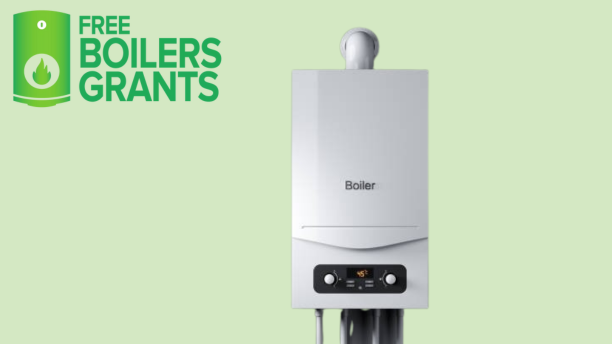Energy efficiency in homes is also determined by the level of insulation present in a home. There are many options for insulation, and the right choice can make all the difference in both comfort and costs. However, with so many products available, it becomes difficult to determine which one suits your home’s requirements best.
The pros and cons of different insulation materials and learn which options best suit your home. How the right insulation can improve energy efficiency, lower bills, and help you qualify for ECO4 grants in the UK.
In this article we will focus on the advantages and disadvantages of the various types of insulation so you can make you own informed decision.
Why Insulation Materials Matter
Insulating your home helps minimise heat loss during cold and also prevents the room from being overly warm during summer. It plays a critical role in regulating indoor climate, reduces expenditures on energy, and increases the property’s worth. The selection of insulation material for the home is important to note that not all types of insulations offer equal benefits.
Let’s explore the most commonly used insulation materials and understand their advantages and disadvantages.
Types of Insulation Materials
Insulation materials range from the bulky fibre materials such as the fiberglass, the rock and the slag wool, cellulose and natural fibres, the rigid foam boards to the sleek foils. Thick materials oppose the conductive and, to some extent, convective heat transfer in a building cavity. Styrofoam boards insulate the flow of heat by trapping air or another gas in between the layers. Reflective foils in radiant barriers and reflective insulation systems emit radiant heat away from the living space making it more suitable in warm climate regions. Here are some common types of insulation materials:
1. Mineral Wool Insulation
Mineral wool consists of 75% post-industrial recycled materials on average. It does not need a reinforcement of other chemicals to make it fire resistant and it is usually used in the forms of blankets and blown-in insulation.
| Pros of Mineral Wool Insulation | Cons of Mineral Wool Insulation |
| Fire Resistant | Expensive |
| Water-Resistant | Not suitable for air sealing |
| Good Soundproofing | Limited availability |
2. Spray Foam Insulation
Currently, spray foam insulation is widely used because of its qualities and advantages. Spray foam has all the properties of an ideal insulator in that it is able to prevent the passage of heat through conduction, convection or radiation. It has very good R-value which provides solutions to construction, insulation, and water-resistance, pest, and sound resistance.
| Pros of Spray Foam Insulation | Cons of Spray Foam Insulation |
| High R-Value | Expensive |
| Air Barrier | Professional Installation Required |
| Moisture-Resistant | Off-Gassing |
3. Glasswool or Fibreglass Insulation
Glasswool insulation or fibreglass insulation is derived from recycled glass that is in molten state and, then spun into long fibres. The fibres are then coated with a binder and these are baked in an oven to ensure that they are bonded well, cut into the required size and then packed.
| Pros of Fibreglass Insulation | Cons of Fibreglass Insulation |
| Affordable | Health Hazard |
| Fire-Resistant | Reduced Performance When Wet |
| Soundproofing | Less Eco-friendly |
| Easy Installation |
4. Cellulose Insulation
Cellulose is a fibre insulation material which mainly comprises of recycled paper chips. Compared to other insulation types, cellulose insulation incorporates a significantly higher level of recycled material. The paper is made fiberized which allows for its densification which in turn helps to enhance air tightness.
| Pros of Cellulose Insulation | Cons of Cellulose Insulation |
| Eco-friendly | Fire Risk |
| Good Air Sealing | Moisture Sensitivity |
| Pest Deterrent | Settling Issues |
5. Reflective or Radiant Barrier Insulation
Radiant barriers and reflective insulation use reflective foil surfaces to protect against radiant heat transfer making them efficient in energy conservation. However, there are still some differences when comparing them, for example, in structure, installation, usage, and efficacy. This type of insulation is used primarily to reflect heat away from the home rather than absorbing it. It’s typically installed in attics.
| Pros of Radiant Barrier Insulation | Cons of Radiant Barrier Insulation |
| Effective in Hot Climates | Less Effective in Cold Climates |
| Lightweight | Requires air gaps |
| Longer Lifespan | No soundproofing |
Insulation Material Types and Their Performances
Here’s a quick look at how these insulation materials compare in various performance categories:
| Insulation Type | R-Value | Cost (£/sq metre) | Fire Resistance | Moisture Resistance | Eco-Friendliness | Cost |
| Cellulose | 3.2 – 3.8 | £6 – £8 | Medium | Low | High | Medium |
| Mineral Wool | 3.0 – 3.3 | £7 – £10 | Very High | High | Medium | High |
| Fibreglass | 2.2 – 2.7 | £3 – £5 | High | Low | Low | Low |
| Spray Foam | 6.0 – 7.0 | £15 – £20 | Medium | High | Medium | High |
| Radiant Barrier | 4.0 – 5.0 | £10 – £12 | Medium | Medium | High | Medium |
Considerations for Choosing the Right Insulation
When choosing the best insulation material for your home, keep the following in mind:
- Climate: For example, loft insulation might work well in colder areas, while radiant barriers are better for hot climates.
- Budget: Certain materials like spray foam can be costlier but offer higher efficiency.
- Environmental Impact: If sustainability is important, look for eco-friendly materials like cellulose insulation.
- Installation Type: DIY installation may be easier with materials like fibreglass, while others like spray foam require professional help.
Government Support for Home Insulation
In the UK, there are free insulation grants available through government schemes such as ECO (Energy Company Obligation). These grants can help reduce the cost of installing insulation, particularly loft insulation and cavity wall insulation. Homeowners and landlords should explore these options to make their homes more energy-efficient without bearing the full financial burden.
Conclusion
Choosing the right insulation material depends on your home’s needs, budget, and environmental considerations. Each material offers its own set of advantages and challenges, whether it’s the affordability of fibreglass, the efficiency of spray foam, or the eco-friendliness of cellulose.
Insulating your home correctly will reduce energy bills, enhance comfort, and add long-term value. With the growing availability of free insulation grants, there’s never been a better time to consider upgrading your home’s insulation.
FAQs
What is the most cost-effective insulation material?
Fibreglass is the most affordable and commonly used insulation material.
Can I install insulation myself?
Yes, materials like fibreglass and cellulose can be DIY projects, but spray foam requires professionals.
How does insulation improve energy efficiency?
Insulation reduces heat transfer, lowering the need for heating or cooling and reducing energy bills.
Are there any grants for home insulation?
Yes, the UK government offers free insulation grants through programmes like ECO.
Which insulation material is best for soundproofing?
Mineral wool is highly effective at soundproofing compared to other insulation types.









